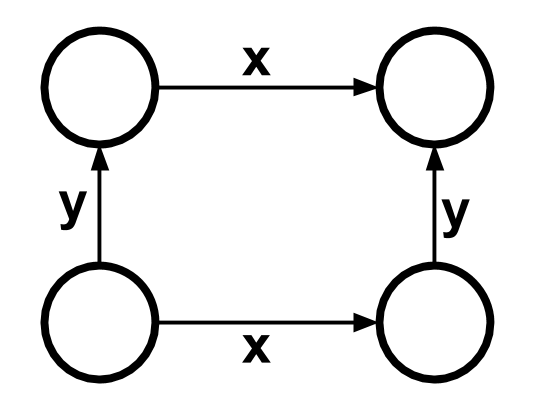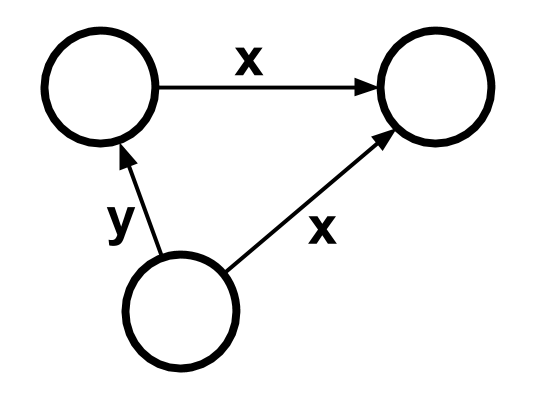glados 1.1.4  glados: ^1.1.4 copied to clipboard
glados: ^1.1.4 copied to clipboard
A simple testing framework that tries to break your properties.
Testing is tedious! At least that's what I thought before I stumbled over property-based testing – a simple approach that allows you to write fewer tests yet gain more confidence in your code. In traditional testing, you define concrete inputs and test whether they result in the desired output. In property-based testing, you define certain conditions that are always true for any input (those are called properties). In mathematics, there's the ∀ operator for that. In Dart, now there's Glados. |
 |
Here are some benefits:
- ⚡ Write fewer tests. Let Glados figure out inputs that break your properties.
- 🌌 Test for all possible inputs. Well, not all. But a wide variety.
- 🐜 Get a concise error report. Glados simplifies inputs that break your tests.
- 🤯 Understand the problem domain better by thinking of properties.
Table of Contents
Quickstart #
dev_dependencies:
test: ...
glados: ...
Use Glados<...>().test(...) instead of the traditional test(...).
// Running this test shows you that it fails for input 21.
Glados<int>().test((a) {
expect(a * 2, lessThan(42));
});
You can test with multiple inputs.
Glados2<String, int>().test((a, b) { ... });
Instead of using type parameters, you can customize inputs using any.
Glados(any.lowercaseLetter).test((letter) { ... });
Glados(any.nonEmptyList(any.positiveIntOrZero)).test((list) { ... });
Do you want to test with your data classes? Here's how.
You can also customize the size of the generated inputs.
Comprehensive example #
Suppose you write a function that tries to find the maximum in a list. I know – that's pretty basic – but it's enough to get you started. Here's a wrong implementation:
/// If the list is empty, return null, otherwise the biggest number.
int? max(List<int> input) => null;
To be sure that the function does the right thing, you might want to write some tests. Here's how those would look like in traditional unit testing:
test('maximum of empty list', () {
expect(max([]), equals(null));
});
test('maximum of non-empty list', () {
expect(max([40, 2, 10]), equals(40));
});
Not familiar with the syntax of the
testpackage? Here are the docs.
Executing pub run test path/to/tests.dart should show that the second test fails.
In property-based testing, you look for properties – conditions that should be true for any input.
For example, if max produces null, the list should be empty:
Glados<List<int>>().test('maximum is only null if the list is empty', (list) {
if (max(list) == null) {
expect(list, isEmpty);
}
});
Just create a Glados instance and call its test method instead of using the normal test function.
Glados takes a generic type parameter – in this case, List<int>.
It then tests your code with a variety of inputs of that type.
All of them need to succeed for the whole test to succeed.
Running the test should produce something like this:
Tested 1 input, shrunk 25 times.
Failing for input: [0]
...
Glados discovered that a list with some content breaks the condition!
Let's modify our max function to pass this test:
int? max(List<int> input) => 42;
We need to add another property test to reject this function as well.
Arguably the most prominent property for max is the following: The maximum should be greater than or equal to all items of the list:
Glados(any.nonEmptyList(any.int)).test('maximum is >= all items', (list) {
var maximum = max(list);
for (var item in list) {
expect(maximum, greaterThanOrEqualTo(item));
}
});
Instead of defining type parameters, you can also pass in generators to Glados to customize which values it generates.
You can find all available generators as fields on the any value.
In this case, we only test with non-empty lists because we handled the empty list in the first test.
Running the tests produces the following result:
Tested 35 inputs, shrunk 117 times.
Failing for input: [43]
...
Glados detected that the property breaks if the input list contains a 43.
Let's add a more practical implementation for max:
int max(List<int> input) {
if (input.isEmpty) {
return null;
}
var max = 0;
for (var item in input) {
if (item > max) {
max = item;
}
}
return max;
}
That change fixes the tests but still doesn't work for lists containing only negative values. So, let's add a final test:
Glados(any.nonEmptyList(any.int)).test('maximum is in the list', (list) {
expect(list, contains(max(list)));
});
I'll leave implementing the function correctly to you, the reader.
But whatever solution you come up with, it'll be correct: Our tests aren't merely some arbitrary examples anymore. Instead, they correspond to the actual mathematical definition of max.
How to find properties #
Finding properties can seem difficult at times, but you'll get better at finding them, and you can start with obvious ones first. They don't have to be perfect – testing a few simple properties can still be better than traditional unit tests.
To get you started, here are a bunch of patterns that can help you to find properties:
Commutativity: The order of the operations doesn't matter.
|
 |
Transform: Certain operations don't affect the result of another operation.
|
 |
Inverse: Sometimes, you can invert operations.
|
 |
Idempotence: Certain operations don't change the value if they're applied a second time.
|
 |
Oracle: If you have a correct implementation and want to test a more efficient one, just compare the results.
|
 |
How does it work? #
Glados works in two phases:
- 🌍 The exploration phase: Glados generates increasingly complex, random inputs until one breaks the property or Glados reaches the maximum number of runs.
- 🐜 The shrinking phase: This phase only happens if Glados found an input that breaks the property. In this case, it gradually simplifies the input and returns the smallest input that's still breaking the property.
Generators are responsible for generating values. A Generator<T> is a function that takes a random and size and produces a Shrinkable<T>.
The random parameter should be used as the only source of randomness to guarantee reproducibility when running tests multiple times.
The size parameter indicates a rough estimate of how complex the returned value should be.
For example, the generator for int produces ints in the range from -size to size.
A Shrinkable<T> is a wrapper around a T (it has a value getter for that). It also has a shrink method, which produces an Iterable of Shrinkable<T> values similar to the current value but smaller.
Smaller means that if you would call shrink repeatedly on the smaller values and their children, grandchildren, etc., the program should eventually terminate (aka the transitive hull concerning shrink should be finite and acyclic).
The basic types all have corresponding generators implemented. You can find all generators on any.
How to write generators #
For simple data classes with some fields, this is how the generator might look like:
class User {
final String name;
final int age;
}
extension AnyUser on Any {
Generator<User> get user => combine2(any.string, any.int, (name, age) {
return User(name, age);
});
}
For enums, this is how the generator might look like:
enum Ripeness { ripe, unripe }
extension AnyRipeness on Any {
Generator<Ripeness> get ripeness => choose(Ripeness.values);
}
If you want to customize generators further, like only generate valid email addresses, you might need to work on a lower level of abstraction. Just check out the source code of existing generators for some examples.
Here's how to set a generator as the default generator for a type:
Any.setDefault<String>(any.emailAddress);
// Uses the any.emailAddress generator based on the type parameters.
Glados<String>().test('blub', (email) { ... });
Customizing the exploration phase #
You can configure the exploration phase by customizing the ExploreConfig.
For example, if you want to test some code with massive inputs, you might adjust ExploreConfig's parameters so that Glados starts with already massive inputs and generates much bigger inputs after just a few runs:
Glados(any.email, ExploreConfig(
initialSize: 100, // Start quite big
speed: 10, // and increase the input size by 10 each run,
numRuns: 10, // but only do 10 runs instead of 100.
)).test('my test', (input) {
...
});
ExploreConfig also has a random parameter, which you can provide with a custom Random instance.
By default, ExploreConfig uses a Random instance created with a fixed seed so that your tests are deterministic.
What's up with the name? #
GLaDOS is a charming robot in the Portal game series. She's the head of the Aperture Science Laboratory facilities, where she spends the rest of her days testing. So I thought that's quite a fitting name. 🥔
By the way, both Portal games are great. If you haven't played them, definitely check them out.
Further info & resources #
- Special thanks to @batteredgherkin for the Glados sticker.
- Here's the talk that got me into property-based testing.
- This article covers the topic in more detail.
🍰